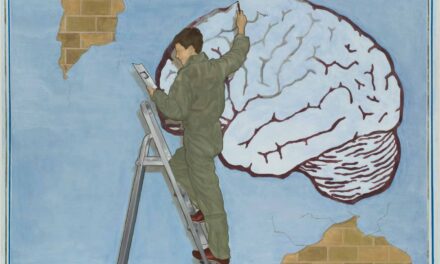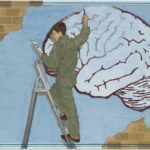Taking a Collaborative Community Approach to Compulsive Hoarding Disorder

At Hoarding Help Central, we are well aware that compulsive hoarding disorder presents a big issue for families, neighbors, and communities. As such a large problem for an individual to have that carries a risk for dangerous consequences, everything possible must be done to understand the disorder in order to treat it thoroughly. After all, compulsive hoarding disorder is a chronic, mental health condition that carries close to a 100 percent recidivism rate, meaning that without effective intervention strategies and on-going monitoring and supervision, many hoarders are at a risk for continuing their behaviors. For this reason, effective treatment methods are crucial.
Today, Hoarding Help Central will be taking a closer look at compulsive hoarding disorder in order to demonstrate why taking a collaborative community approach to treatment is the most effective. We will be discussing what compulsive hoarding disorder is, its prevalence, the cause of its onset, the dangers associated, and how to most effectively treat the disorder. Let’s get started!
What is Compulsive Hoarding Disorder?
Before we discuss compulsive hoarding disorder more in-depth, it’s a good idea for you to have an understanding of what compulsive hoarding disorder is. According to the Mayo Clinic, compulsive hoarding disorder “is a persistent difficulty discarding or parting with possessions because of a perceived need to save them. A person with hoarding disorder experiences distress at the thought of getting rid of the items. Excessive accumulation of items, regardless of actual value, occurs.”
As of 2013, with the new edition of the DSM being published, compulsive hoarding disorder was officially named as its own individual disorder. Previously, compulsive hoarding was viewed to be a behavior associated with obsessive-compulsive disorder rather than a disorder within itself. With compulsive hoarding disorder finally being named as its own unique condition, there are some specific criteria that an individual must meet in order to be diagnosed with compulsive hoarding disorder. These criteria are as follows as outlined by the DSM-V:
- Persistent difficulty discarding or parting with possessions, regardless of their actual value.
- This difficulty is due to a perceived need to save the items and to distress associated with discarding them.
- The difficulty discarding possessions results in the accumulation of possessions that congest and clutter active living areas and substantially compromises their intended use. If living areas are uncluttered, it is only because of the interventions of third parties (e.g., family members, cleaners, authorities).
- The hoarding causes clinically significant distress or impairment in social, occupational, or other important areas of functioning (including maintaining a safe environment for self and others).
- The hoarding is not attributable to another medical condition (e.g., brain injury, cerebrovascular disease, Prader-Willi syndrome).
- The hoarding is not better explained by the symptoms of another mental disorder (e.g., obsessions in obsessive-compulsive disorder, decreased energy in major depressive disorder, delusions in schizophrenia or another psychotic disorder, cognitive deficits in major neurocognitive disorder, restricted interests in autism spectrum disorder).
It should also be noted that the DSM-V also calls for the clinician diagnosing an individual with compulsive hoarding disorder to specify whether or not the individual is also experiencing “excessive acquisition” as well as to specify the person’s level of insight into their behavior (good, fair, poor, or absent/delusional).

The Manifestations of Hoarding Disorder
Next, let’s talk about the different ways in which compulsive hoarding disorder manifests in terms of behavior. There are three main ways that compulsive hoarding disorder manifests: clutter, collecting, and squalor. Let’s take a look at each of these manifestations in-depth so that you have a thorough understanding of the behavior that each entails.
Clutter
Clutter is defined by the DSM-V as “a large group of usually unrelated or marginally related objects piled together in a disorganized fashion in spaces designed for other purposes (e.g.) tabletops, floor, hallway).” One of the main consequences of continued clutter is chronic disorganization.
Chronic disorganization is defined as a persistent disorganization that impacts an individual’s life on a regular basis. Substantial time is often spent looking for items that an individual has lost or repeating lost work. In the case of chronic disorganization, both personal goals and any level of self-care are often lacking.
Clutter tends to result in a couple of commonalities. For one, chronically disorganized individuals may not have excessive acquisitions. Secondly, those with compulsive hoarding disorder tend not to see themselves as disorganized despite the large amounts of unorganized clutter that is often found in their homes.
Collecting
The next common manifestation of compulsive hoarding disorder is collecting. It should be noted that hoarding is not inherently the same as collecting, however. Whereas collectors are organized and systematic, hoarders tend to be disorganized. Collecting also does not produce clutter, distress, or impairment while as compulsive hoarding behavior does. Collectors typically keep their possessions well-organized and each item differs from the other items in the collection to form interesting and often valuable groupings of items. Collecting also has a well-defined purpose, to display the items to others who will appreciate them.
Hoarding goes beyond the simple act of collecting. Hoarders tend to collect items, acquiring them and retaining them while your typical collector acquires and eventually discards. While collecting is a pleasurable pastime for many, hoarding is a compulsion to collect and retain. Unlike the act of collecting in a normal sense, hoarding entails collecting with no perceived sense of organization, all horizontal surfaces are usually covered by clutter, and living spaces often become unusable in any average sense.
Squalor
The next manifestation of compulsive hoarding disorder is squalor, also known as Diogenes Syndrome. Squalor is defined as a situation of extreme filth, deterioration, and decay of objects or of a structure. Squalor often includes bug infestations or creatures seeking shelter. Additionally, mold and mildew or typically present in conditions of squalor. One particular type of squalor that is common in regards to compulsive hoarding disorder is the act of animal hoarding.
Animal hoarding is defined as the act of compulsively collecting large numbers of animals and failing to provide the minimum standards of care required (sanitation, nutrition, and veterinary care). In the case of animal hoarding, squalor is typically present as the hoarder is unable to provide the level of care needed. This results in grimy, unsanitary conditions that cause harm to not only the animals but the hoarder themselves.
The Prevalence, Onset, and Course of Compulsive Hoarding Disorder
Next, let’s talk about the prevalence, onset, and course of compulsive hoarding disorder. Studies suggest that compulsive hoarding disorder occurs in 4 to 6 percent of the adult population. Researchers hypothesize that there is in fact a much greater prevalence of compulsive hoarding disorder but that it is an unknown epidemic due to the shame associated with self-reporting.
Interestingly, studies suggest that compulsive hoarding disorder appears to affect men and women at similar rates and around 75 percent of people with compulsive hoarding disorder also have a co-occurring mental health condition. The most common co-occuring mental health conditions include major depressive disorder, generalized anxiety disorder, and social anxiety disorder. Further, around 20 percent of people with compulsive hoarding disorder also have obsessive-compulsive disorder.
In regards to the onset of compulsive hoarding disorder, research suggests that hoarding symptoms begin to appear early in life and continue throughout the entire lifespan of an individual. As the person ages, the severity of their symptoms seems to increase if untreated. This speaks to the reason that some of the most severe cases of compulsive hoarding are found in the elderly population.
In regards to the course of compulsive hoarding disorder, researchers believe that between the ages of 11 and 15, symptoms may first emerge. By the mid-20’s, symptoms then begin to interfere with the individual’s everyday functioning. By the mid-30’s, a person with compulsive hoarding disorder will demonstrate clinically significant impairment and are likely to meet the full criteria for an official diagnosis of compulsive hoarding disorder. By the time a person with compulsive hoarding disorder reaches the age of 50 and above, if untreated up to that point, their symptoms are the most severe. This is why hoarding symptoms appear to be almost 3 times more likely in older adults between the ages of 55 and 94 years old.
Special Concerns When Working With Elderly Hoarders
Considering that the largest amount of the population to have compulsive hoarding disorder tends to be elderly adults, there are special concerns that must be addressed when working with elderly hoarders. This is because of the fact that there are increased challenges associated with treating elderly hoarders as their symptoms tend to be the most severe.
For one, older adults tend to have collected more items than younger hoarders. Secondly, there is a greatly increased risk of injury related to a fall or topple hazard in the homes of elderly hoarders. Additionally, there tends to be a greater risk of diminished physical and mental capacity such as disease or dementia. The elderly population also tends to be harder to treat as they tend to be less familiar, and therefore less comfortable, with psychiatric treatment. These are just a few of the many special concerns that should be taken into account when working to treat elderly hoarders.
Treatment Considerations
Aside from the special concerns associated with working with the elderly population of hoarders, there are several treatment considerations that need to be taken into account when forming a collaborative community approach to compulsive hoarding disorder. One such treatment consideration are the important interpersonal aspects. There are a few guidelines that should be followed when forming a collaborative community approach to compulsive hoarding disorder including:
- Helpers may not touch or throw anything away in the home of a hoarder without explicit permission on behalf of the hoarder
- All final decisions regarding discarding, saving, and organizing must be made by the hoarder themselves.
- Helpers should always be aware of their body language as well as their non-verbal behavior when interacting with the hoarding individual.
- Respectful language should always be prioritized.
- Care should be taken to match the client’s language in order to establish a certain level of trust.
- Helpers should use empathetic statements.
- Helpers should focus on relationship building first and foremost, even above clutter reduction.
- Care should be taken to initially identify issues of safety and imminent risk factors.
- Finally, focus should always be placed on organizing a collaborative “plan of attack”.
Hoarding Disorder Treatment Interventions
Now that you know some of the most important treatment considerations that should be taken into account when working with a hoarder, it’s time to discuss some of the most effective treatment interventions that can be formed into a collaborative community approach. There are several compulsive hoarding disorder treatment interventions that researchers and mental health professionals alike have identified as the most effective when intervening in a dangerous hoarding situation.
Medications
It should be noted that while medications are not considered as effective as standalone treatment, they have shown some promise when combined with a collaborative approach to compulsive hoarding disorder. Medications used to treat disorders such as depression or anxiety have proven the most helpful in the case of hoarders. That being said, there are currently no specific medications identified solely to treat compulsive hoarding disorder. The most promising medications used in combination with a collaborative approach to compulsive hoarding disorder have included SSRIs as well as some ADD drugs such as Ritalin.
Cognitive Behavioral Therapy
When forming a collaborative community approach to compulsive hoarding disorder, cognitive behavioral therapy has shown a lot of promise. Cognitive behavioral therapy (CBT) has proven to be most effective when combined with motivational interviewing and exposure therapy along with an established harm reduction team and collaborative plan of care. Evidence directly supports the benefits of CBT for compulsive hoarding disorder. In fact, 70 percent or more of hoarders have shown improvement after 26 CBT sessions which can take a year or more. It should be noted that CBT is a type of therapy that focuses on challenging negative thoughts, works on changing beliefs about the self and the world around us, and is based off of the premise that your thoughts and beliefs directly influence your behavior and emotions.
Mindfulness
Mindfulness is another treatment intervention that can be applied in a collaborative community approach to compulsive hoarding disorder. Mindfulness is defined as the practice of focusing on the present moment in order to calm the voices in our heads, reframe anxiety and stress, and reclaim awareness of our senses, body, and breath. Mindfulness has shown in certain studies to be effective when combined with CBT, motivational interviewing, and an established harm reduction team in a collaborative approach to compulsive hoarding disorder.
Harm Reduction
Finally, harm reduction is yet another effective treatment intervention strategy best used in a collaborative community approach to compulsive hoarding disorder. Harm reduction is an approach that is focused around managing severe hoarding symptoms in order to decrease the most harmful consequences of hoarding, especially in cases where the hoarder consistently refuses help or treatment. In a harm reduction strategy, a focus is placed on recognizing that the person may make the decision not to allow harm reduction interventions by exerting their right to autonomy.
It’s also important, when using a harm reduction approach, to remember that it is not necessary for a hoarder to stop all hoarding behavior but, rather, to make their environment habitable. Harm reduction is also focused around the fact that no two hoarding situations are identical and that change is a slow process. Finally, it’s important to remember that harm reduction is, at its core, an essential part of the harm reduction/care plan team. This is, after all, a strategy focused around using a collaborative community approach to compulsive hoarding disorder.
Collaborative Treatment Methods Are Best for Treating Compulsive Hoarding Disorder
In conclusion, with everything we now know about compulsive hoarding disorder including the prevalence, onset, behaviors, and common characteristics, there is much evidence to suggest that collaborative treatment methods are best for treating compulsive hoarding disorder. When a team of professionals work collaboratively and use the treatment intervention strategies outlined above, they are undoubtedly the most effective. Further, the hoarding individual themselves should be viewed as part of the team and a focus should be placed on encouraging them to help themselves along with the assistance of qualified professionals. With this approach to hoarding, we may see a decrease in the frequency of recidivism- something that is crucial when it comes to compulsive hoarding disorder. That’s our hope here at Hoarding Help Central!









